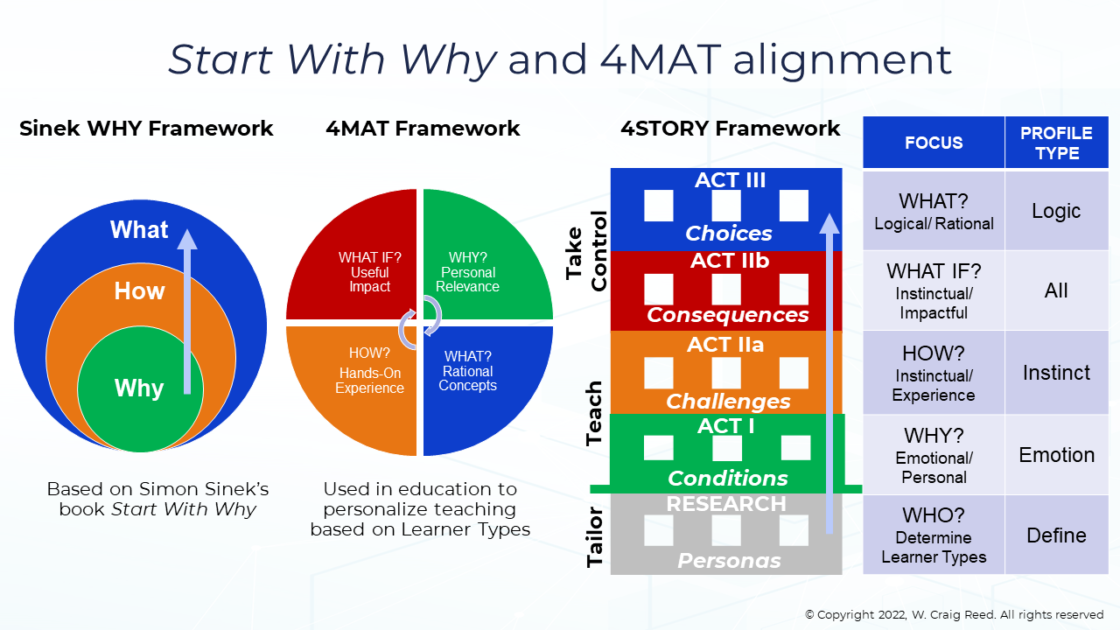Why We Should Start With Who … Not Why
Why We Should Start With Who … Not Why
In 2011, author and speaker Simon Sinek started a global movement that inspired millions to ask a simple question: Why? His book and Ted Talk series, titled Start With Why, seek to answer why some organizations and individuals are more influential, innovative, and persuasive than others. Why some drive higher loyalty from employees, followers, or customers.
Start With Why examines how certain leaders have exerted influence by thinking, acting, and communicating in similar fashion to define the reasons why someone should care about something. Sinek shows how successful firms and individuals start with this concept and then move on to explore the How and What. Many product marketing and sales professionals have embraced this concept and now begin by asking why customers should care about a solution before explaining how it works and then what it does. However, every top marketing and sales pro knows that the reasons why one person might be motivated to buy could be quite different from the reasons why someone else buys.
Download the 4STORY Messaging Guide Framework Template
Unfortunately, as an executive consultant for dozens of leading firms across decades, I’ve seen the Why approach fail more times than it should. Why? Because these firms did not start with Who. They still envisioned their company and their stuff as the heroes of the story. They did not clearly identify Who they were trying to impact with their Why.
Yes, most product marketers create go-to-market plans that outline the serviceable available market (SAM), target segments (geo, size, vertical markets, etc.) and personas (CEO, VP, decision-makers, etc.). However, this is only scratching the surface. Some organizations, mostly on the Business to Consumer (B2C) side of the fence, go a step further. They may create pictures of typical customers called John and Jane and place them on a wall. They discuss John and Jane’s typical life, work, family, and day. They envision what these two are like and what they may want from a product, solution, or company. This is a great start, but to truly understand who these people are, we need to dive deeper. We need to make them the heroes of their story and outline their Heroes Journey in detail. Once we do engage with John and Jane, as recommended by The Challenger Sale book, we need to Teach, Taylor, and Take Control of the Sale.
As I outline in my new book, START WITH WHO, to teach anyone anything, we need to understand Who they are. We need to first Taylor our Teaching. Most teachers understand this concept, and many use a proven methodology called 4MAT. The 4MAT framework outlines four “learner types.” Feelers/Watchers seek meaning and need to be personally involved. They learn by listening and sharing ideas and are interested in people, cultures, and social interaction. They are, obviously, more emotionally oriented, perhaps like Dr. McCoy on the TV Series Star Trek.
Thinkers/Watchers seek and examine facts. They need to know what experts think and believe and are more interested in concepts and ideas. They like to collect data and examine information. They are analytical and function by adapting to experts. Certainly, they are more logical, akin to Mr. Spock on Star Trek.
Thinkers/Doers and Feelers/Doers seek usability, learning by hands-on experience, prefer real-life correlation, enjoy variety and taking risks, and often reach conclusions without employing logic. Definitely they are more instinctual, somewhat like Captain Kirk.
The 4MAT system recommends using different teaching methods to engage with each type, starting with the Feelers/Watchers. 4MAT uses a clockwise approach, beginning with personal relevance to ask the question Why. Teachers are encouraged to transition sequentially across the quadrants, progressing next to more rational concepts that will examine logical information that appeals to the Thinkers/Watchers. The second quadrant asks the question What.
The third quadrant appeals to the Thinkers/Doers who prefer hands-on experience and asks the question How. The final quadrant is more useful and impactful, asking the question What If, and will appeal to the Feelers/Doers.
As we know, this is a bit out of sequence with Sinek’s Start With Why, which of course starts with Why and then goes to How and What. Sinek’s path aligns better with storytelling, but both are missing the crucial first step: WHO.
To solve this problem, I created a new framework called 4STORY that has been used by Aventi Group, an Inc. 5000 consulting agency, for product marketing and sales enablement across dozens of leading firms over the past several years. These include Adobe, Booz Allen, Cisco, HP, Oracle, Qualys, SAP, Visa, VMware, and many others. 4STORY extends the 4MAT system while blending storytelling with brain science to increase reaction and retention by 1400%. 4STORY also aligns with most sales methodologies including The Challenger Sale, SPIN, Miller Heiman, Sandler, etc. For sales enablement pros, this ensures adoption while increasing conversion rates by 3X. For product marketers, below is a link to a Messaging Guide template that is an order of magnitude more comprehensive than the template from the Product Marketing Alliance (PMA)—as good as that one may be.

For all marketing and sales execs, change is hard. We like our comfy faded blue jeans, but if we refuse to adopt more modern and proven approaches, we risk becoming dinosaurs that get stuck in tar pits.
Click here for the 4STORY Messaging Guide template.




